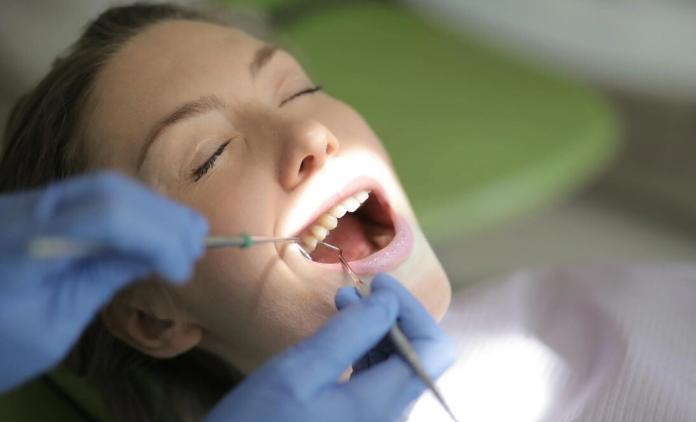Tooth decay is one of the most common dental issues in most people. However, it is also an overlooked dental problem. A tooth decay can arise because of several reasons. To avoid it, it is important that you understand the causes and symptoms that can lead to this dental issue.
Once you understand the causes, you can follow the preventive strategies to maintain your oral hygiene and have a beautiful smile. Let us explore everything about tooth decay and how you can keep it at bay.
What Is Tooth Decay?
Tooth decay is also known as dental caries or cavities. A tooth decay takes place because of the destruction of the tooth enamel. It is the hard, outer layer of your teeth. The process of tooth decay begins when acids produced by bacteria in the mouth start to eat away at the enamel. If you leave tooth decay untreated for a long time, it can progress through the dentin.
Eventually, the infection will reach the inner pulp of the tooth. If this happens, the patient can experience severe pain and might also be at risk of tooth loss.
Stages Of Tooth Decay
Tooth decay takes place in stages. The below-mentioned points explain how the infection progresses in your mouth.
- A person is at a greater risk of tooth decay when there is plaque buildup. Acids from the plaque bacteria start removing minerals from the enamel.
- If the acid exposure is constant, it can lead to the breakdown of the enamel. When this happens, it leads to cavities.
- Then, the decay reaches the dentin which is the softer layer beneath the enamel.
- The decay progresses to the tooth’s pulp which causes severe pain and infection.
- If you leave the cavity untreated, the infection can lead to abscess at the root of the tooth.
Causes Of Tooth Decay
Now that we know most of the things about tooth decay, let us explore the main causes of tooth decay.
1. Poor Oral Hygiene
The most basic reason for tooth decay is poor oral hygiene. Poor hygiene is the result of inadequate brushing and flossing techniques. It could leave the food particles in the mouth which feed bacteria and cause plaque buildup. Over time, the plaque can harden into tartar
which can be removed only at the dental clinic.
2. Diet And Sugar Intake
Another common reason why tooth cavities occur is diet and sugar intake. Sugary and acidic foods and drinks are the major culprits in tooth decay. It is because the bacteria in the mouth feed on sugars that produce acids that attack the enamel.
3. Bacteria And Plaque Formation
Plaque is a sticky film of bacteria that forms constantly in the absence of poor oral hygiene. This situation can lead to cavities and even gum diseases.
4. Dry Mouth
Saliva helps in washing away food particles and bacteria. So, when there is a lack of saliva, there is a risk of tooth decay. Dry mouth usually occurs because of medications and medical conditions.
Symptoms Of Tooth Decay
Let’s take a look at a few symptoms of tooth decay that one should watch out for.
Early Signs
- White or dark spots on the teeth
- Sensitivity to hot, cold, or sweet foods
- Bad breath
Advanced Symptoms
- Visible holes or pits in the teeth
- Toothache or spontaneous pain
- Pain when biting down
- Swelling or pus around a tooth
Complications Of Untreated Tooth Decay
Untreated tooth decay can lead to severe infections. As mentioned, you can develop an abscess. Sometimes, you might also experience systemic issues like heart disease. There is a very deep connection between oral health and your overall health.
How To Prevent Tooth Decay
Prevention is better than cure when it comes to maintaining oral hygiene. Let’s take a look at some tips that might help you prevent the risk of tooth decay.
1. Maintain Good Oral Hygiene
The first step in preventing tooth decay is to maintain good oral hygiene. You should brush your teeth at least twice a day with a good fluoride tooth. While brushing, make sure to use a soft-bristled toothbrush and replace it every three to four months.
It is also important to floss daily as it helps in removing plaque and food particles between teeth and below your gum line. Flossing helps you clean those areas in your mouth where the toothbrush can’t reach. You must work on maintaining your dental hygiene so that you don’t have to face the consequences of not caring for your oral health.
2. Diet And Nutrition
Diet and nutrition play a key role in maintaining your dental health. To avoid the risk of tooth decay, you must limit sugary snacks, sodas, and acidic foods. These foods can erode enamel and promote bacterial growth.
Instead, you should eat a balanced diet comprising fruits, vegetables, whole grains, and also dairy products. For snacks, you can munch on foods like apples, carrots, and cheese that can help clean teeth and neutralise acids.
3. Regular Dental Visits
Professional dental checkups are a must to avoid any dental issues. Your dentist can check and tell whether you might have any underlying oral problems. You must visit your dentist at least twice a year for professional cleaning. These visits are essential in removing tartar from the teeth that might lead to cavities.
4. Fluoride Treatments and Dental Sealants
Fluoride strengthens enamel and dental sealants help prevent decay. Dental sealants are a protective coating applied to the chewing surfaces of back teeth. These can also act as a guard against cavities.
Treatment Options For Tooth Decay
If you are suffering from tooth decay, the dentist might recommend one of the below-mentioned treatment options.
- Fillings- Fillings are an ideal treatment when the dentist can detect a cavity at an early stage. Fillings can restore the damaged area with the help of composite resins, amalgam, or even gold.
- Crowns – If the decay is more extensive, you might need a crown placement to cover and protect the remaining tooth structure.
- Root Canals – The dentist will recommend the root canal if the tooth decay reaches the pulp. In this case, getting a root canal treatment will help in removing the infected tooth and save the tooth
- Extractions – In cases where tooth decay is extremely severe, you might need to go for a tooth extraction. Replacement options include bridges, implants, or dentures.
Conclusion
Tooth decay is a common dental problem that most people encounter at one point in their lives. Just because it is common, it does not mean that it is not preventable. If you follow a proactive approach to oral hygiene, you can easily keep dental problems at bay.
It is important to understand the causes and symptoms of tooth decay so that you can make the right choices in your everyday life. Following the prevention strategies will help you maintain a healthy smile and overall well-being.
You may also like,








